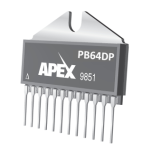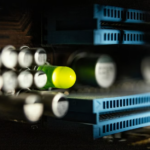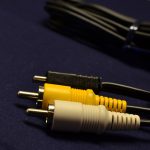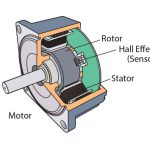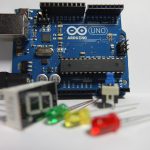
Introduction
Controlling LED intensity is crucial for several reasons, providing various advantages. It allows high LED energy efficiency, visual comfort, longevity, mood customisation, and enhanced lighting functionality in multiple settings and applications. Node-RED is a powerful tool for visual programming and automation of IoT devices. Its intuitive drag-and-drop interface allows it to create complex workflows and control devices without writing extensive code. This article guides how to control LED intensity using Node-RED to create dynamic lighting effects and adjust brightness levels.
What is a Node-RED: Unleashing Its Significance for Controlling LED Intensity
Node-RED, built on top of Node.js, is an open-source visual programming tool designed to create visual programming, control devices, and achieve IoT device automation. Its highly flexible and extensible interface allows users to easily create and deploy applications by connecting various hardware devices, APIs, and online services. It provides a web-based interface where users can drag and drop nodes, connect them together, and define their behaviour using a flow-based programming paradigm.
Node-RED offers a versatile and user-friendly environment for LED control and automation. It finds remarkable applications in home automation, smart lighting, industrial monitoring, creative LED art, and signalling systems. Here’s how Node-RED can be significant in this context:
- Ease of Use: Node-RED’s visual interface makes creating complex workflows for controlling LED intensity easy. Users can drag and drop nodes, configure their properties, and connect them to create a flow–controlling the LED’s intensity.
- Extensibility: Node-RED has a vast node library that supports multiple devices and services. Specific nodes are available for controlling LEDs, such as PWM (Pulse Width Modulation) nodes, to precisely control the LEDs’ intensity by adjusting the duty cycle of the PWM signal.
- Integration with Hardware: Node-RED can integrate with various hardware platforms and devices. To control the LED intensity, you can connect Node-RED to a microcontroller board, such as Arduino or Raspberry Pi, controlling the LEDs using digital or analogue output pins. Node-RED provides dedicated nodes for interacting with these platforms, making it seamless to interface with the hardware.
- Interaction with Other Services: Node-RED can connect with external services and APIs, enabling the integration of LED control with other systems. For example, you can integrate Node-RED with weather APIs to change the LED intensity based on weather conditions. In addition, it can adjust the detected movement intensity when connected to a motion sensor.
- Real-time Control and Feedback: Node-RED monitors and controls LED intensity in real-time. The visual flow representation makes it easy to understand the logic behind the control, and the web-based interface provides immediate feedback on the LEDs’ status.
Crucial Steps to Control LED Intensity with Node-RED
Based on specific hardware and requirements, following the given steps can conveniently control LED intensity using Node-RED,
- Hardware Setup – Before beginning, prepare the necessary hardware components, including LED, a suitable resistor, and a microcontroller or development board. Firstly, connect the LED to the board with the appropriate wiring, ensuring that the LED’s anode connects to the GPIO pin and the cathode to the ground through the resistor.
- Node-RED Installation – If you haven’t installed Node-RED, follow the official documentation for your platform. Node-RED is compatible with Windows, macOS, and Linux operating systems. Once installed, you can access the Node-RED editor through a web browser.
- Creating the Flow – To control the LED intensity, creating a flow in Node-RED is pivotal. Start by adding an input node, such as a button or slider, to determine the desired intensity level. Connect the output of the input node to a function node.
- Modifying the Intensity – In the function node, define the logic to adjust the LED’s intensity based on the input value. For example, use JavaScript code to map the input range to the LED’s PWM range. PWM enables the adjustment of LED brightness by controlling the average power it receives. Add code to calculate the appropriate duty cycle for the PWM signal in the function node based on the input value.
- Controlling the LED – After modifying the intensity, connect the function node’s output to the appropriate output node. The output node represents the GPIO pin of the microcontroller or development board that controls the LED. Ensure to configure the output node to generate a PWM signal with the desired frequency. The frequency determines how quickly the LED switches on and off, typically higher than the human eye’s flicker fusion threshold.
- Deploying the Flow – Once completed the flow, click on the ‘Deploy’ button in the Node-RED editor to deploy the changes. Node-RED will start executing the flow, and you can monitor the debug messages for any errors or unexpected behaviour.
- Testing and Adjusting – To test the LED intensity control, interact with the input node added in Step 3. For example, if you use a slider as the input, move the slider and observe how the LED brightness changes accordingly. You can fine-tune the code in the function node to achieve the desired behaviour and adjust the LED intensity range.
- Enhancing the Flow – Add additional input nodes to adjust the intensity to make the LED intensity control more interactive. It allows combining the LED control with other flows and automation tasks in Node-RED.
- Troubleshooting – In case of any issues, double-check the hardware connections and verify the PWM pin is configured correctly. Ensure the LED and resistor are correctly connected and the code in the function node is error-free.
Concluding Remarks
Node-RED offers excellent performance compared to traditional approaches for controlling LED intensity. Its simplicity, extensibility, hardware integration capabilities, and ability to interact with other services make it significant for controlling LED intensity. It provides a user-friendly environment for creating sophisticated LED control applications without the need for extensive programming knowledge. By following the steps mentioned, it is easy to harness the power of Node-RED to control LED intensity effectively.







